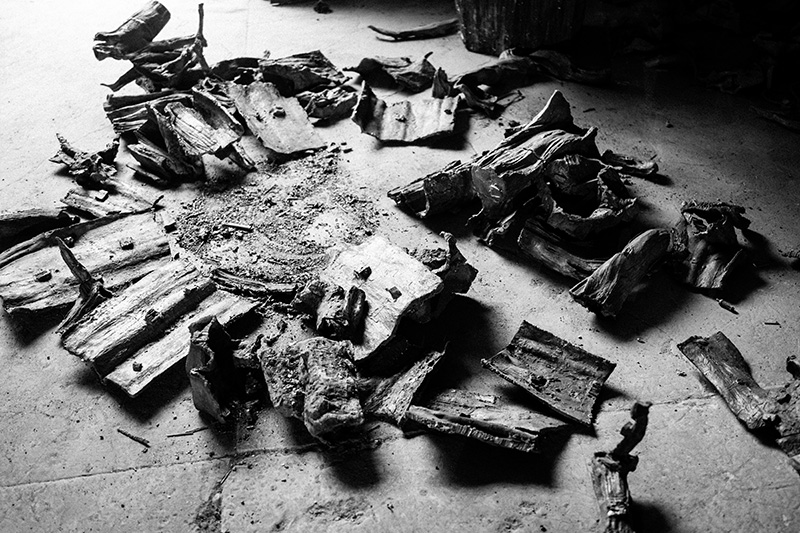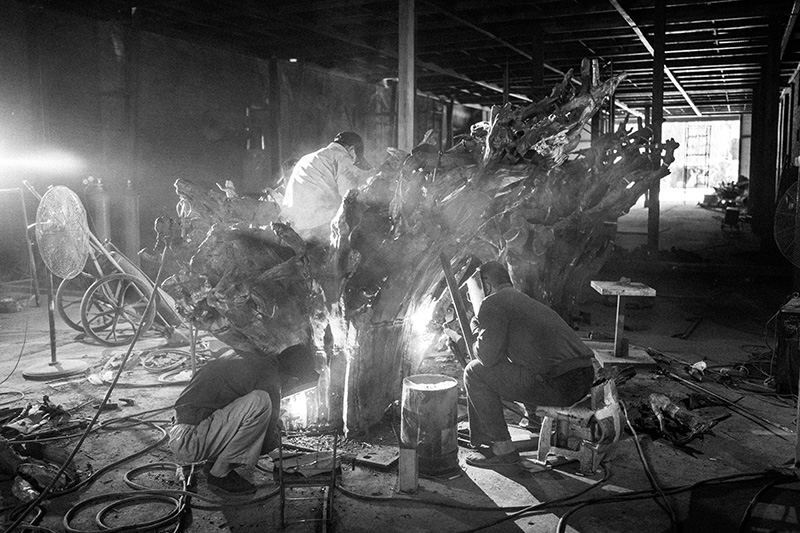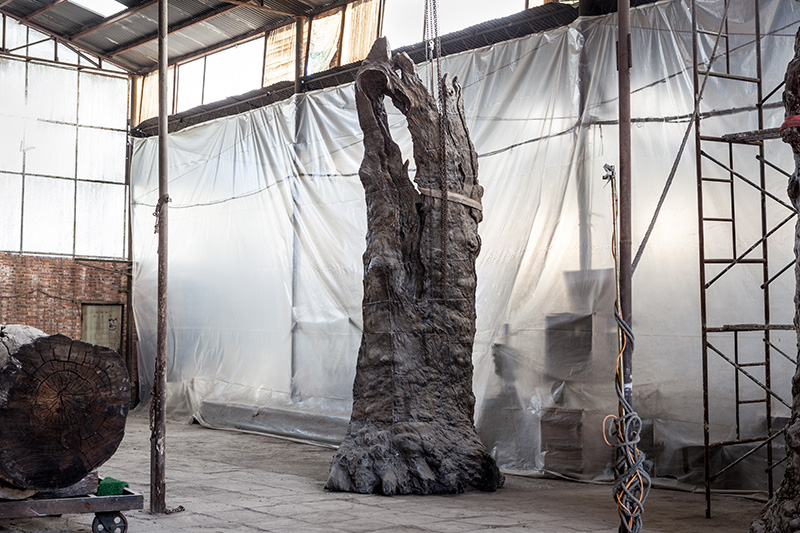ART CITIES:N.York-Ai WeiWei
Ai WeiWei is an inspirational figure for many people both in the West and in China, and both in and outside the art world. Ai’s struggle for freedom of speech and expression sheds light on specific issues that are important in their own right. More broadly, it reminds us of the power of Visual Art to move us as individuals, and sometimes entire nations, to action.
By Dimitris Lempesis
Photo: Lisson Gallery Archive
For “Ai Weiwei 2016: Roots and Branches”, his first solo exhibition with Lisson Gallery in New York, Ai Weiwei populates the space with felled, cast-iron tree trunks, nearly 5 meter long, and a series of iron root sculptures set against the backdrop of a new wallpaper installation. Situated among the beams of the High Line exposed entirely in this exhibition for the first time, the 7 sculptures on display combine to create a forest of displaced objects and reveal the artist’s interest in tradition and contemporaneity as well as the prevalence of displacement in post-modern societies. Natural objects have been an ongoing source of inspiration for Ai Weiwei, with trees recurring as a spiritual motif in his work since 2009. In “Sunflower Seeds” (2010), he filled the enormous Turbine Hall of London’s Tate Modern with exactly 100,000,000 porcelain sunflower seeds, each made by a craftsman from the city of Jingdezhen. Fragments also play an important part in Ai Weiwei’s work as they force attention on foundational elements and the most basic units that combine to create a whole. Here, in line with the artist’s worldview, the whole is not greater than the sum of its parts but rather each individual part is equal and of unique importance. The iron roots and tree trunks shown in New York are presented in a natural, untreated state, appearing at first glance as organic forms, yet upon closer inspection, reveal their artificiality. Not born of nature but made by human hands, the works, themselves contorted by the surrounding landscape, represent a society uprooted by industrialisation and modernisation, illustrating how progress can often come at the expense of cultural and societal well-being. By eliminating their original function and value, Ai Weiwei imbues the objects with new meaning and forces us to confront them in a new light.
Info: Lisson Gallery, 504 West 24th Street, New York, Duration: 5/11-23/12/16, Days & Hours: Tue-Sat 10:00-18:00, www.lissongallery.com




